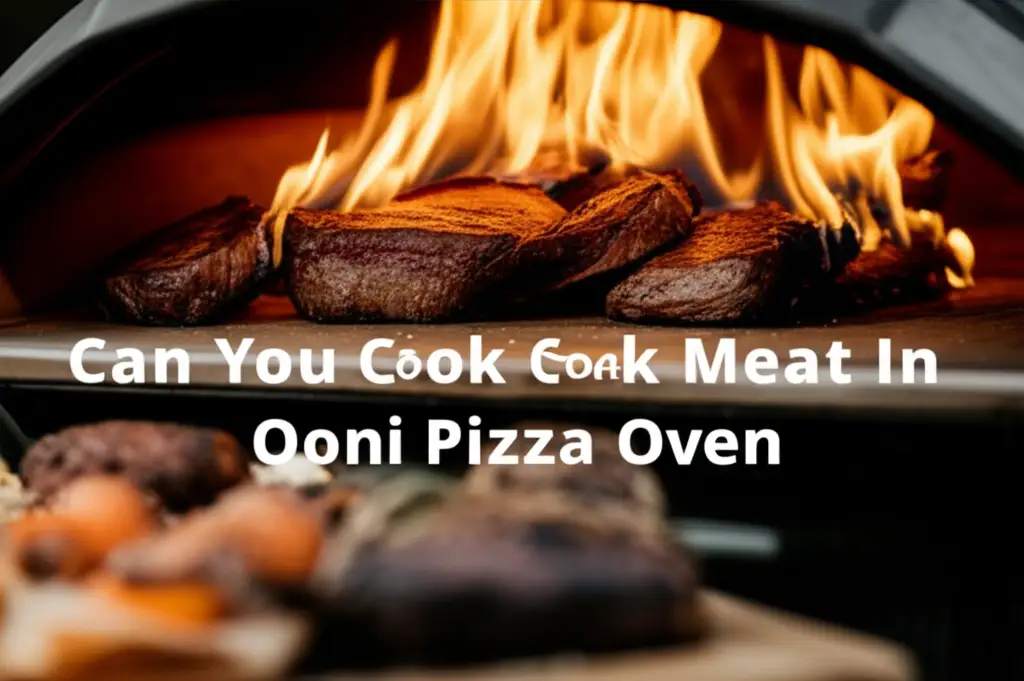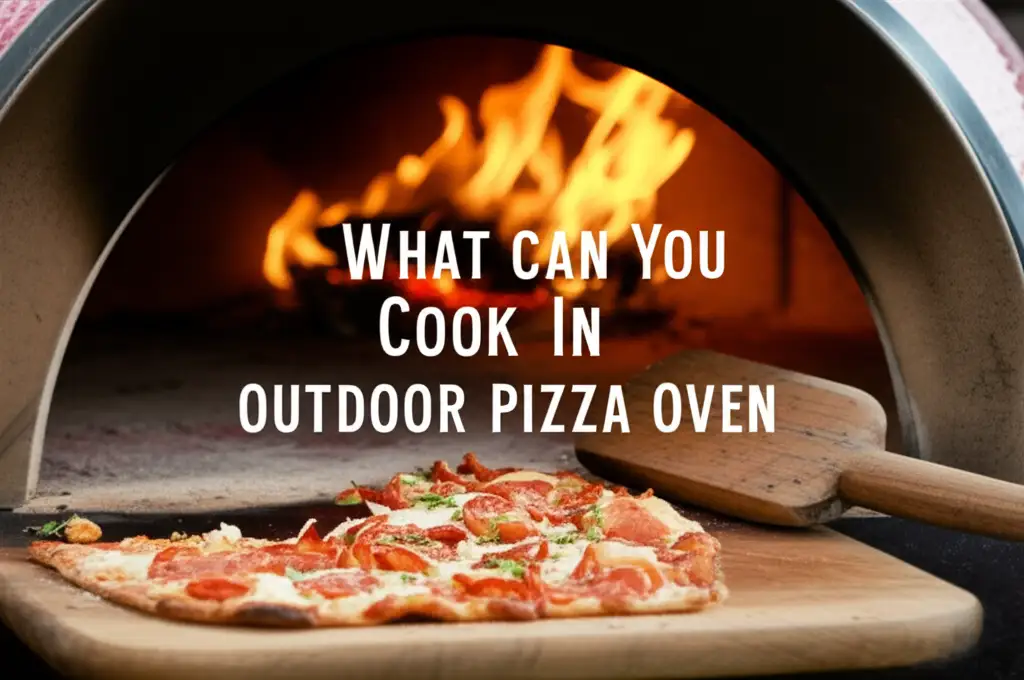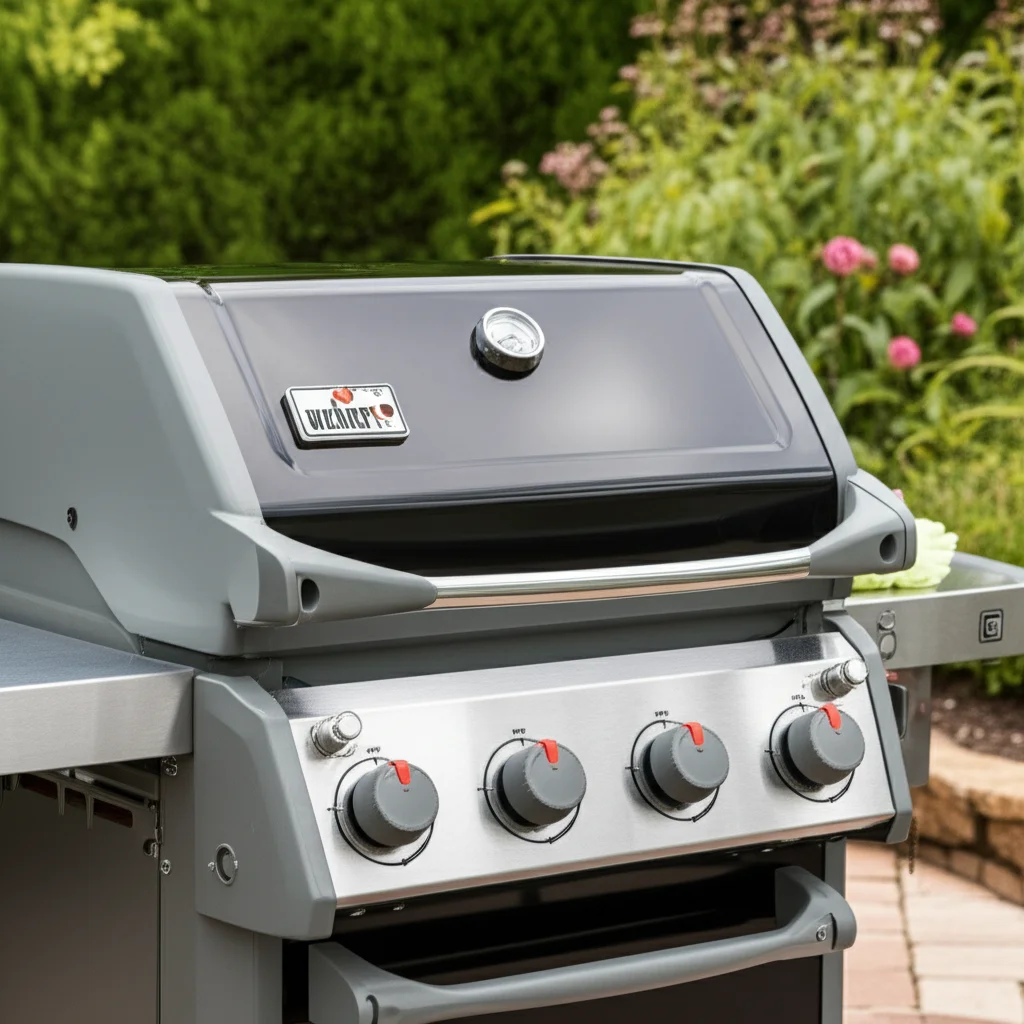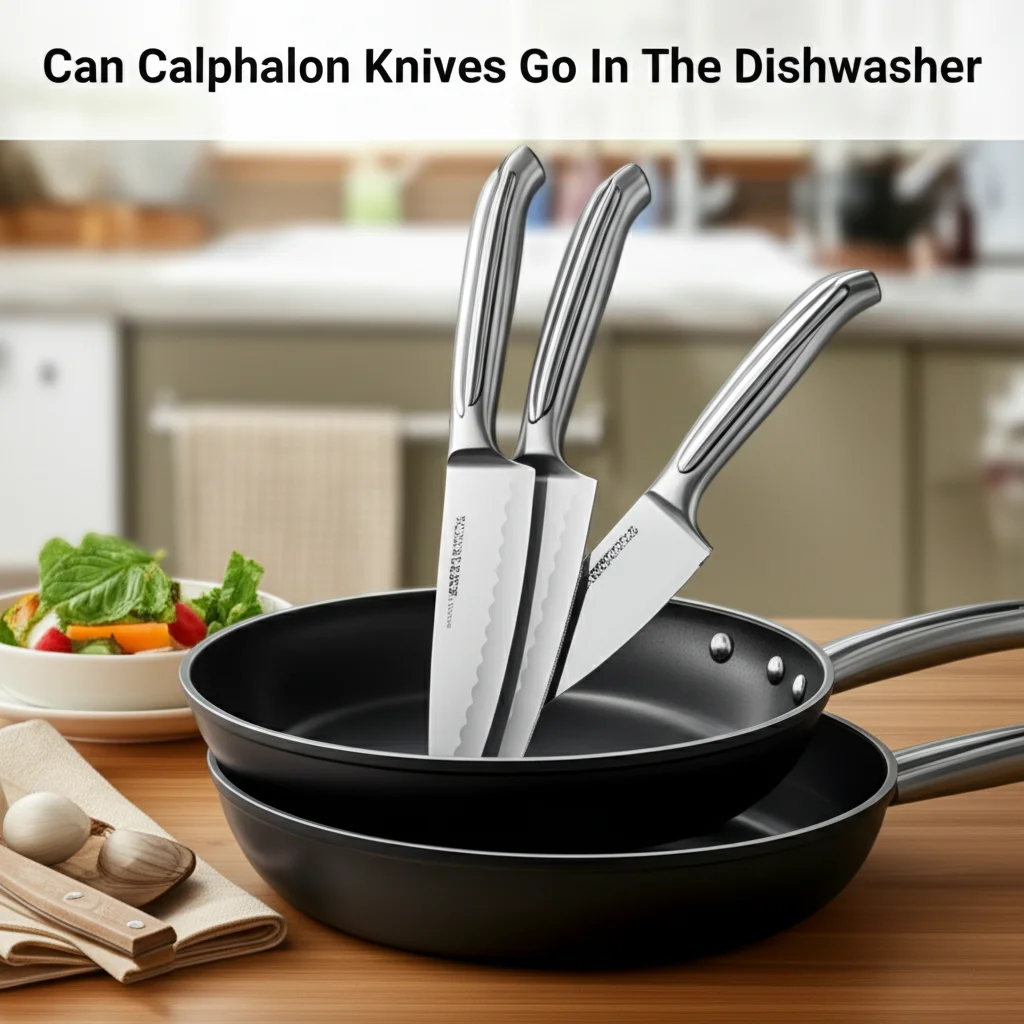· Katria Melrose · Ooni Oven Cooking · 18 min read
Can You Cook Meat In Ooni Pizza Oven

Can You Cook Meat In Ooni Pizza Oven? Absolutely!
Imagine perfectly seared steak, juicy chicken, or crispy fish cooked outdoors. You might wonder, “Can you cook meat in Ooni pizza oven?” The answer is a resounding yes. Ooni ovens are not just for pizza. Their incredible heat and rapid cooking capabilities make them a fantastic tool for a wide range of meat dishes. I have personally experimented with many cuts, and the results are often superior to traditional grilling.
This article explores how you can transform your Ooni into a versatile meat-cooking powerhouse. We will cover the best cuts of meat, essential techniques, and crucial accessories. We will also discuss temperature management and safety tips. Get ready to elevate your outdoor cooking game beyond just pizza.
Takeaway
- Ooni pizza ovens are highly versatile and excellent for cooking various meats.
- High temperatures of Ooni ovens create superior searing and rapid cooking.
- Utilize cast iron pans or griddles for best results with meat.
- Monitor internal meat temperatures for food safety.
- Experiment with different meats and cooking methods to maximize flavor.
Yes, you can cook meat in an Ooni pizza oven, and the results are often outstanding.
Ooni ovens reach very high temperatures, which are ideal for searing and cooking meat quickly. This unique cooking environment creates a delicious crust and a juicy interior. It brings a new dimension to your outdoor cooking.
The Versatility of Your Ooni Pizza Oven for Meat
Your Ooni pizza oven is a powerhouse of heat. People often think of it only for pizzas. But its design and high temperature capability allow it to cook many other foods. I have found it excels at cooking meat. The intense, consistent heat ensures fast and even cooking. This oven provides a fantastic alternative to traditional grills.
The high heat cooks meat quickly. This locks in juices and develops a rich, flavorful crust. Traditional ovens cannot match this speed or char. Outdoor pizza ovens, including Ooni models, offer unique cooking benefits. What can you cook in outdoor pizza oven goes beyond just pizza, extending to various meat dishes. You can cook steaks, chicken wings, or even full roasts with the right setup. The Ooni creates a distinct, often smoky flavor. This flavor comes from the intense heat and sometimes the fuel source.
Why Ooni Heat is Perfect for Meat
Ooni ovens get incredibly hot. Different models like the Karu, Koda, or Fyra reach temperatures over 900°F (500°C). This extreme heat is perfect for searing meat. Searing creates the Maillard reaction. This reaction gives meat a rich, browned crust and complex flavors. For example, a steak cooked at high heat gets a beautiful crust. This crust enhances taste and texture. Understanding how hot does an Ooni pizza oven get is important for controlling your cook.
The intense heat also cooks meat very quickly. This reduces overall cooking time significantly. A steak might cook in just a few minutes. A whole chicken could be ready in under an hour. This speed makes weeknight meals fast and exciting. It also means you spend less time waiting and more time enjoying. The rapid cooking also helps keep meat juicy. Less moisture escapes during the short cook time. This results in tender and flavorful meat.
Beyond Pizza: Expanding Your Ooni Culinary Horizon
Cooking meat in an Ooni opens up many culinary possibilities. You are no longer limited to flatbreads. You can explore different cooking methods. These include searing, roasting, and even slow cooking with proper heat management. For instance, using a cast iron pan allows for indirect cooking. This is perfect for thicker cuts of meat.
I enjoy using my Ooni to cook sausages. Can you cook sausages in an Ooni pizza oven is a common question, and yes, they turn out great. They get a crispy skin and a juicy interior. This expands your outdoor cooking repertoire far beyond basic grilling. The Ooni oven becomes a versatile outdoor kitchen appliance. It can handle almost any meal you throw at it.
Mastering Ooni Temperatures for Different Meats
Controlling temperature is crucial when cooking meat in your Ooni. Unlike pizza, which benefits from consistent high heat, different meats require varied approaches. Understanding how to get your Ooni pizza oven hot is the first step. You then need to learn how to manage that heat. This ensures your meat cooks perfectly, from searing hot to a more moderate roast.
Ooni ovens heat up very quickly. Knowing how long does it take Ooni pizza oven to heat up is helpful. For most meat cooking, you will want the oven to reach its peak temperature first. This allows you to achieve a strong initial sear. Then, you can adjust the heat as needed for the remainder of the cooking process.
High-Heat Searing (750°F - 900°F / 400°C - 500°C)
High-heat searing is where the Ooni truly shines for meat. This temperature range is perfect for thinner cuts of meat. Examples include steaks, lamb chops, and thin-cut pork. The intense heat quickly forms a crust. This is the Maillard reaction at its best. It locks in juices and creates a rich flavor.
To achieve this, preheat your Ooni fully. Wait until the stone or pan is screaming hot. Place your meat directly on a cast iron griddle or pan inside. Cook for short bursts, flipping frequently. This prevents burning while ensuring even cooking. Always use an instant-read thermometer to check internal temperature. This ensures the meat is safe to eat.
Moderate Roasting (500°F - 700°F / 260°C - 370°C)
Not all meats benefit from extreme heat. Thicker cuts, whole chickens, or roasts need a more moderate temperature. This allows them to cook through without burning the outside. For these, you can let the Ooni cool slightly after initial preheating. Or, reduce the flame (for gas models) or add less fuel (for wood-fired models).
Using a cast iron pan or Dutch oven is essential for roasting. This provides a buffer from the direct intense heat of the stone. It also helps with heat distribution. You can cook larger cuts of meat, like a pork loin or a small leg of lamb. Even roasted vegetables work well here. This method ensures tenderness and even cooking.
Low and Slow (350°F - 450°F / 175°C - 230°C)
While less common for Ooni, a skilled operator can achieve lower temperatures. This is ideal for very thick cuts of meat or for slow cooking. You might need to turn the flame very low. Or, let the wood fire die down significantly and manage embers. This method is more challenging to maintain consistently. It is important to monitor the oven temperature closely.
For very thick briskets or pork shoulders, a traditional smoker or oven might be better. However, for smaller “slow” cooks like a reverse-seared steak, the Ooni can manage. Cook the meat at a lower temperature until almost done. Then, crank up the heat for a final high-temp sear. This two-stage method creates incredible results.
Essential Tools and Accessories for Ooni Meat Cooking
To cook meat successfully in your Ooni pizza oven, you need more than just the oven itself. Certain tools and accessories will make the process easier and the results better. I have found these items indispensable for expanding my Ooni’s capabilities beyond just pizza. Using the right equipment protects your food and ensures safety.
While you might be used to using a pizza pan in your Ooni pizza oven, meat cooking often requires different cookware. Metal pans or griddles are essential. They conduct heat well and protect the meat from direct, intense stone heat. These accessories allow for versatile cooking methods.
Cast Iron Cookware
Cast iron is your best friend for cooking meat in an Ooni. It retains and distributes heat exceptionally well. This provides a consistent cooking surface.
- Cast Iron Pan/Skillet: Perfect for searing steaks, chicken thighs, or roasting vegetables. The pan gets incredibly hot. This creates a beautiful crust on your meat. I use a 10-inch skillet most often. It fits well in most Ooni models.
- Cast Iron Griddle: Ideal for burgers, sausages, or flat cuts. The griddle provides direct contact with the heat. Some griddles have ribbed surfaces for grill marks.
- Cast Iron Dutch Oven/Casserole Dish: Great for larger roasts or braised dishes. The lid helps trap moisture. This ensures tender, juicy results. Make sure your Dutch oven fits inside your specific Ooni model.
When using cast iron, preheat it inside the Ooni for 10-15 minutes. This ensures it’s piping hot before you add the meat. Always use oven mitts designed for high heat.
Infrared Thermometer
An infrared thermometer is crucial for checking the temperature of your cooking surface. This tool instantly measures the heat of the oven stone or your cast iron pan. It helps you decide when to place your meat. It is vital for consistent results. Without it, you are guessing the cooking temperature.
Instant-Read Meat Thermometer
This is arguably the most important tool. You must know the internal temperature of your meat for safety and doneness. An instant-read thermometer gives you a quick, accurate reading. Insert it into the thickest part of the meat. Do not touch bone. This ensures your meat is cooked to your desired level and safe for consumption. Never rely on guesswork for meat.
Heat-Resistant Gloves and Long Tongs
The Ooni oven gets extremely hot. Protect your hands with proper heat-resistant gloves. These are different from regular oven mitts. They can withstand much higher temperatures. Long tongs are also essential. They allow you to safely move meat and pans inside the hot oven. They keep your hands a safe distance from the flames.
Cutting Board and Rest Rack
After cooking, meat needs to rest. A good cutting board is useful for slicing. A rest rack elevates the meat. This allows air to circulate and juices to redistribute. Resting is vital for juicy meat. Do not skip this step.
These tools are investments. They will make your Ooni cooking experience safer and more enjoyable. They also significantly improve the quality of your cooked meats.
Best Meats to Cook in Your Ooni Pizza Oven
The Ooni pizza oven’s intense heat and unique cooking environment are perfect for many types of meat. While it excels at high-heat searing, you can adapt it for roasting too. Here, I’ll detail some of the best meats to cook in your Ooni and how to approach them. I have had great success with all these options. Each brings a different culinary experience to the table.
Steak: The Ooni Searing Star
Steak is perhaps the most popular choice for Ooni meat cooking. The oven’s ability to reach extreme temperatures creates an unparalleled crust. This is something traditional grills often struggle with.
- Recommended Cuts: Ribeye, New York strip, sirloin, flank steak, skirt steak. Thicker cuts (1-1.5 inches) work best for searing.
- Preparation: Pat steak dry. Season liberally with salt and pepper. You can add garlic powder or other spices.
- Cooking Method:
- Preheat your Ooni to maximum temperature (800-900°F / 425-500°C).
- Place a cast iron skillet or griddle inside to preheat for 10-15 minutes.
- Add a high smoke point oil (like grapeseed or avocado) to the hot pan.
- Carefully place the steak in the pan. Sear for 60-90 seconds per side. Use long tongs to flip.
- For thicker steaks, you might need to rotate the pan or remove it briefly. This allows for even cooking and prevents burning.
- Check internal temperature:
- Rare: 125°F (52°C)
- Medium-Rare: 130-135°F (54-57°C)
- Medium: 135-140°F (57-60°C)
- Rest the steak for 5-10 minutes before slicing. This helps juices redistribute.
Chicken: Crispy Skin, Juicy Interior
Chicken, especially pieces with skin, benefits greatly from the Ooni’s high heat. The skin crisps beautifully while the meat stays moist.
- Recommended Cuts: Bone-in, skin-on thighs, drumsticks, wings. A spatchcocked whole chicken also works well.
- Preparation: Pat chicken dry. Season with your favorite rub. For wings, a simple salt, pepper, and garlic powder mix is excellent.
- Cooking Method:
- Preheat Ooni to a moderate-high temperature (600-750°F / 315-400°C).
- Use a cast iron pan. Place chicken skin-side down first.
- Cook, turning every few minutes, until skin is crispy and golden.
- For wings, cook directly on the stone if confident, or in a perforated pan. Turn often.
- Spatchcocked chicken will cook fast. Place it skin-side up initially in a pan. Rotate frequently.
- Internal temperature for chicken should reach 165°F (74°C).
- Rest for a few minutes before serving.
Fish: Flaky and Flavorful
Cooking fish in an Ooni requires quick action due to its delicate nature. The high heat can provide a beautiful sear without drying it out.
- Recommended Cuts: Salmon fillets, cod, mahi-mahi, snapper. Thicker fillets work best.
- Preparation: Pat fish dry. Season with salt, pepper, lemon, and herbs.
- Cooking Method:
- Preheat Ooni to moderate-high heat (600-700°F / 315-370°C).
- Use a well-oiled cast iron skillet or a heat-safe baking dish.
- Place fish skin-side down (if applicable). Cook for 3-5 minutes per side.
- The fish will cook quickly. It is done when it flakes easily with a fork.
- Internal temperature should be 145°F (63°C).
Sausages: A Quick and Tasty Treat
As mentioned earlier, sausages are fantastic in an Ooni. They get a perfect snap and juicy interior.
- Recommended Types: Bratwurst, Italian sausage, chorizo, frankfurters.
- Preparation: Prick sausages lightly with a fork to prevent bursting.
- Cooking Method:
- Preheat Ooni to a moderate temperature (500-600°F / 260-315°C).
- Place sausages in a cast iron pan.
- Cook, turning frequently, for 8-15 minutes until browned and cooked through.
- Internal temperature should reach 160°F (71°C) for pork sausages. For chicken or turkey sausages, it should be 165°F (74°C).
- Can you cook sausages in an Ooni pizza oven is a definite yes, and they are quick to prepare.
Lamb and Pork Chops: High-Heat Delights
Lamb chops and pork chops are excellent candidates for the Ooni’s searing capabilities. They develop a delicious crust.
- Recommended Cuts: Lamb loin chops, lamb rib chops, thick-cut pork chops.
- Preparation: Season simply with salt, pepper, and herbs like rosemary or thyme.
- Cooking Method:
- Preheat Ooni and a cast iron pan to high heat (750-850°F / 400-450°C).
- Sear chops for 2-3 minutes per side.
- Reduce heat if needed to cook through without burning.
- Internal temperature for lamb: 145°F (63°C) for medium-rare. For pork: 145°F (63°C) for medium.
- Rest for 5 minutes before serving.
Remember to always monitor your meat with an instant-read thermometer. This ensures food safety and optimal doneness. The Ooni’s speed requires vigilance, but the results are worth it.
Advanced Techniques for Perfect Ooni Meat Cooking
Cooking meat in an Ooni oven goes beyond just throwing it in. Applying specific techniques ensures that your meat is not just cooked, but cooked perfectly. These methods leverage the Ooni’s unique heat characteristics. I have honed these techniques through practice. They will help you achieve restaurant-quality results at home.
1. The Cast Iron Advantage
Using cast iron cookware is not just recommended; it’s almost essential for most meat in an Ooni. The Ooni’s intense radiant heat and direct stone heat can burn meat quickly. Cast iron provides a barrier. It absorbs and distributes heat evenly. This creates a hot, consistent cooking surface.
- Preheat the Pan: Always preheat your cast iron pan inside the Ooni for 10-15 minutes before adding meat. This ensures the pan is as hot as the oven. A screaming hot pan means an instant, beautiful sear.
- Oil Selection: Use oils with a high smoke point. Grapeseed, avocado, or refined olive oil work well. Avoid extra virgin olive oil, which will smoke and burn.
- Even Searing: Rotate the pan frequently in the oven. The Ooni’s heat often comes from one side (the burner). Rotating ensures even searing across the meat surface.
2. Temperature Management and Fuel Control
Controlling the oven temperature is vital. It is different for gas versus wood-fired Ooni models.
- Gas Ovens (Koda, Karu Gas): These offer precise temperature control.
- For high-heat searing, turn the flame to maximum.
- For roasting, lower the flame significantly. This maintains a more moderate temperature.
- Monitor with an infrared thermometer. Adjust as needed.
- Wood-Fired Ovens (Karu, Fyra): These require more skill to manage heat.
- For high heat, keep the fuel chamber full and flames roaring.
- For moderate heat, let the flame die down. Cook with residual heat and embers. Add small pieces of wood to maintain heat.
- Using good quality wood pellets is important for consistent heat in models like the Fyra. Can you use wood pellets in Ooni pizza oven details this.
3. The Reverse Sear Method
This technique is excellent for thicker cuts of meat like prime rib or thick steaks. It involves cooking at a lower temperature first, then finishing with a high-heat sear.
- Initial Cook: Place the meat in a cast iron pan inside the Ooni at a moderate temperature (around 500-600°F / 260-315°C). Cook until the internal temperature is 10-15°F below your target doneness. This could take 15-30 minutes, depending on thickness.
- Final Sear: Remove the meat and let the Ooni return to maximum heat. Place the meat back in the screaming hot pan. Sear for 1-2 minutes per side to develop a deep crust.
- Benefits: This method ensures even cooking throughout the meat. It prevents the outside from burning while the inside remains undercooked.
4. Spatchcocking Poultry
Spatchcocking (butterflying) a whole chicken or small turkey is a game-changer for Ooni cooking. It flattens the bird. This allows for more even cooking and faster cooking times.
- Process: Remove the backbone of the chicken. Flatten it. This exposes more surface area to the heat.
- Cooking: Place the spatchcocked chicken skin-side up in a cast iron pan. Cook at a moderate-high temperature (600-700°F / 315-370°C). Rotate the pan frequently to ensure even browning.
- Results: In about 40-60 minutes, you will have a perfectly cooked, crispy-skinned chicken. This is much faster than a conventional oven.
5. Managing Flare-Ups
Fat dripping onto the hot stone or flame can cause flare-ups. This is common when cooking fatty meats.
- Prevention: Always use a pan. This contains the fat.
- Response: If a flare-up occurs, pull the pan back from the flame quickly. Close the oven door if possible (for models that have one). Wait for the flames to subside. Then, continue cooking. Never pour water into the hot oven to extinguish flames. This can damage the stone.
By employing these advanced techniques, you can unlock the full potential of your Ooni oven for meat cooking. Each method helps control the intense heat. This allows for precise cooking and delicious results.
Safety and Best Practices for Ooni Meat Cooking
Cooking with an Ooni oven means working with extremely high temperatures. Safety must be your top priority. Beyond fire safety, ensuring your meat is cooked to a safe internal temperature is crucial for health. I always follow these guidelines. They ensure both my safety and the quality of my food.
1. Temperature Monitoring: Meat and Oven
Accurate temperature monitoring is non-negotiable.
- Meat Thermometer: Always use an instant-read meat thermometer. Insert it into the thickest part of the meat without touching bone. This is the only way to confirm your meat is cooked to a safe internal temperature.
- Poultry (chicken, turkey): 165°F (74°C)
- Ground Meats (beef, pork, lamb): 160°F (71°C)
- Beef, Pork, Lamb, Veal (steaks, chops, roasts): 145°F (63°C) (with 3-minute rest)
- Fish: 145°F (63°C)
- Oven Thermometer: An infrared thermometer helps you gauge the temperature of your oven stone or cast iron pan. This prevents burning and helps you cook at the optimal temperature for different meats. Knowing how hot does an Ooni pizza oven get is useful. You can then ensure you are hitting the right mark for your cook.
2. Using Proper Cookware
As discussed, cast iron is ideal for meat cooking in an Ooni.
- Heat Distribution: Cast iron distributes heat evenly, preventing hot spots that can scorch meat.
- Flare-Up Prevention: Pans contain dripping fat, which significantly reduces the risk of flare-ups inside the oven.
- Protection: The pan protects the meat from the intense direct radiant heat from the oven dome and flame.
3. Personal Protective Equipment (PPE)
Protect yourself from the extreme heat.
- High-Heat Resistant Gloves: Regular oven mitts are not enough. Invest in gloves designed for high-heat grilling or blacksmithing. These protect your hands when handling hot pans or adjusting fuel.
- Long Tongs and Spatulas: Use long-handled tools. They keep your hands and arms away from the oven opening and direct heat.
- Eye Protection: While not always necessary, consider safety glasses if you are working with hot oil that might splatter.
4. Location and Stability
Your Ooni oven needs a safe, stable surface.
- Non-Combustible Surface: Place your Ooni on a non-combustible surface. Examples include granite, concrete, or a sturdy metal table. Avoid plastic or wooden surfaces directly. Check what can I put my Ooni pizza oven on for detailed guidance.
- Clearance: Ensure adequate clearance from walls, fences, and overhanging structures. The oven radiates significant heat.
- Stability: The surface must be stable and level. This prevents the oven or hot pans from tipping over. Avoid surfaces like glass tables, as discussed in can you put Ooni pizza oven on glass table.
5. Vigilance and Constant Monitoring
Ooni ovens cook incredibly fast. This requires constant attention.
- Do Not Walk Away: Never leave meat unattended in a hot Ooni. It can go from perfectly cooked to burnt in seconds.
- Rotate and Flip: Rotate your pan and flip your meat frequently. This ensures even cooking and prevents one side from over-cooking.
- Watch for Smoke: Excessive smoke usually means something is burning. Identify the source and adjust.
6. Post-Cooking Cool Down
After cooking, allow the oven to cool down safely.
- Gas Models: Turn off the gas supply at the source.
- Wood-Fired Models: Allow embers to burn out naturally. Do not touch the oven until it is completely cool.
- Clean-up: Once cool, clean your cast iron cookware. Season it properly to maintain its non-stick properties.
By adhering to these safety guidelines and best practices, you can confidently cook a variety of delicious meats





